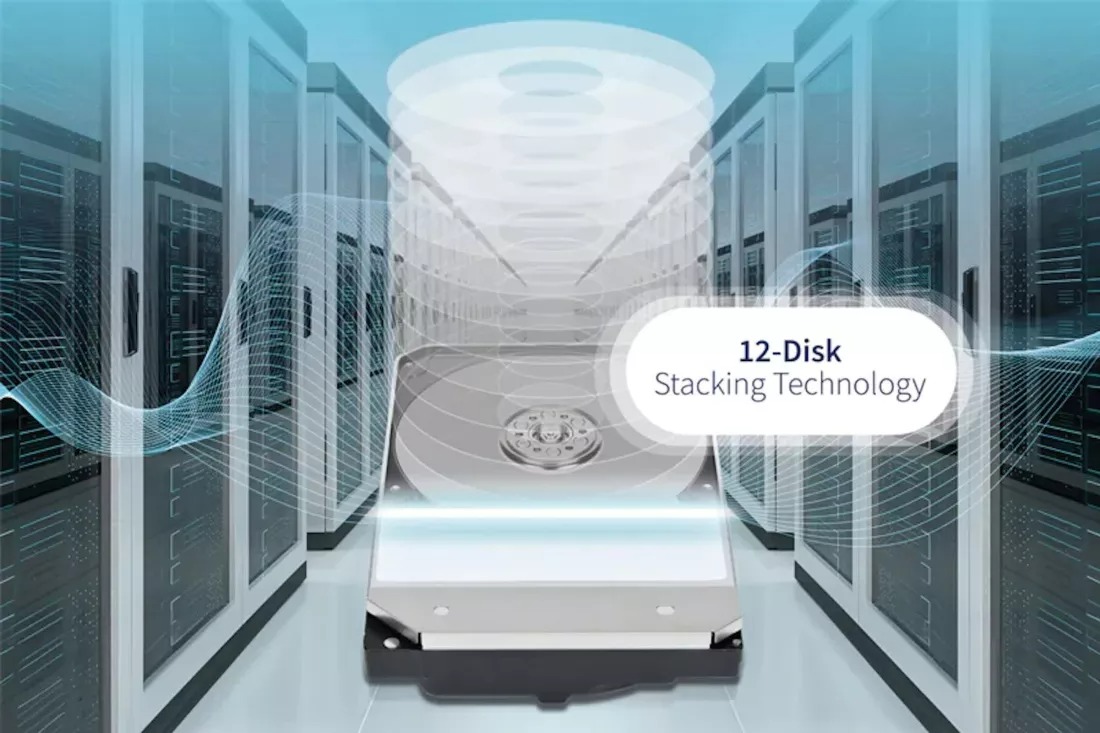Your data center’s storage density just hit a new ceiling—or rather, Toshiba just shattered it. The company became the first manufacturer to verify 12-disk stacking technology in standard 3.5-inch hard drives, surpassing every competitor still stuck at 10-disk configurations.
This isn’t just incremental progress; it’s a fundamental leap that opens the door to 40TB drives by 2027. While hyperscale operators scramble for storage solutions that can handle AI workloads and streaming demands, Toshiba delivered the mechanical breakthrough everyone needed but nobody expected.
Glass Changes Everything
Aluminum-to-glass substrate switch delivers 20% more storage in same space.
The secret lies in replacing traditional aluminum disk substrates with glass—a material swap that sounds simple but required completely redesigning internal components. Glass platters run thinner while actually improving mechanical stability, like swapping cardboard for carbon fiber.
Those two extra disks represent a 20% jump in storage density without expanding the drive’s footprint. Your server racks suddenly got more efficient without any infrastructure changes.
Enterprise-Grade Timeline
40TB drives target hyperscale data centers with proven MAMR technology.
Toshiba isn’t building these drives for your home media server. The 40TB models launching in 2027 specifically target hyperscale data centers and cloud operators where every terabyte matters for operational costs.
The drives integrate Toshiba’s proven Microwave-Assisted Magnetic Recording (MAMR) technology, which uses focused microwaves to reduce magnetic resistance during writes. This combination of mechanical innovation and magnetic precision addresses the storage density crisis facing enterprise infrastructure.
Technology War Intensifies
MAMR approach challenges competitors betting on heat-assisted recording.
While Toshiba perfects mechanical stacking with MAMR, rivals like Seagate and Western Digital are pursuing Heat-Assisted Magnetic Recording (HAMR). HAMR uses laser-generated heat to temporarily soften magnetic coercivity, promising even higher densities—Seagate reportedly forecasts 100TB drives by 2030.
But HAMR remains experimental with unproven enterprise reliability. Toshiba’s glass-platter approach delivers tangible capacity gains using mature, tested technology that data center operators can actually deploy.
Reliability Engineering
Enhanced vibration resistance addresses mechanical stability concerns.
More platters typically mean more vibration and potential failure points—exactly what enterprise storage can’t tolerate. Toshiba addressed these concerns through glass substrates that improve in-plane accuracy and overall mechanical stability. The redesigned internal architecture maintains the always-on reliability standards that hyperscale operators demand while delivering unprecedented capacity in proven form factors.
This breakthrough confirms mechanical HDDs remain crucial for cost-sensitive enterprise storage, even as flash technologies expand. When your infrastructure needs massive capacity at minimal cost per terabyte, spinning disks still win—they’re just getting a lot bigger.





























